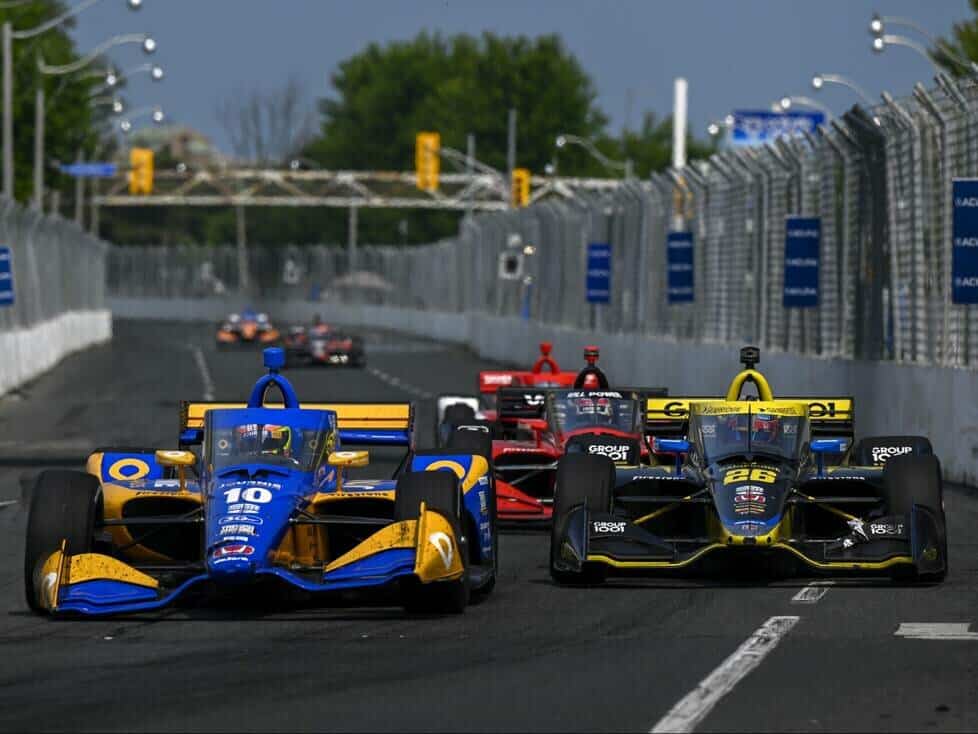Honda is pushing for a cost reduction in the IndyCar Series from 2026 – The Japanese are even threatening to pull out of the championship
The IndyCar Series could be in trouble in the coming years, as Honda has openly talked about a possible withdrawal from the championship if costs are not massively reduced from 2026. Added to this are problems with the planned hybrid drive, the introduction of which has been postponed again ahead of the 2024 season. But what makes the Japanese in the US formula series such a difficult task?
It is the technical costs that are causing Honda problems. The Japanese car manufacturer is contractually bound to the IndyCar Series until 2026, i.e. until the end of the current regular cycle. In order to continue, a lot would have to happen after this period. Honda’s head of motorsport Chuck Schifsky told Racer.com: “We are concerned about the costs. If we don’t continue, they will be the reason.”
According to the Honda string-puller, the high costs are also responsible for the fact that IndyCar has not yet been able to attract a third manufacturer to the series alongside the Japanese and Chevrolet. “If the revenue justified the investment, other manufacturers would have joined long ago,” he says. Technically, IndyCar faces many challenges, as planned changes have regularly fallen through so far.
First, the introduction of the new 2.4-liter engines was canceled, which is why the current 2.2-liter V6 engines will continue to be used until 2026. The hybrid unit does not appear to be reliable enough, which is why the electric motor will not be introduced until after the Indy 500 in 2024. In this context, Pato O’Ward warns of a standstill in the series. The McLaren driver would like to see a new basis for the chassis that has been in use since 2012. Like the engines, the Dallara DW12 will also be used until at least 2026.
Honda has been active in the IndyCar series since 1994, but has already looked around for alternatives to the formula series. “We want to save five to ten million dollars a year in technical costs,” says Schifsky. “If that doesn’t work, it’s too expensive and we’ll do something else. That could be NASCAR, an expansion of our Formula 1 program or something that has nothing to do with motorsport.”
With its luxury brand Acura, Honda also has a strong presence in the IMSA series, where the Japanese are represented in both the GTP and GTD classes. According to Schifsky, many manufacturers are jumping on the LMDh and hypercar bandwagon because the investment in these cars should be worthwhile. In order to make the IndyCar program profitable, a third manufacturer would have to enter the championship, as this would massively reduce costs
“We are currently responsible for 15 to 17 cars,” says Schifsky about the IndyCar program. “If that number were to drop to nine to eleven, the profitability would improve.” Currently, Honda and Chevrolet have to share the more than 27 full-time cars in IndyCar, and a third manufacturer would better spread the costs over several shoulders.
IndyCar wants to solve the cost problem and keep a loyal partner like Honda in the series, but this will probably require a third manufacturer. Honda itself makes it clear: “We have to make a decision and Honda will not continue just because the brand has been on board for 30 years,” clarifies Schifsky. “But that doesn’t mean that we will definitely leave, because we love the series. “





